
The famous Paphos is not only a beach holiday, but also historical sites.
The bulk of the attractions are concentrated in the Paphos district Kato Paphos, near the Harbour and the main beaches, and is a valuable monument of history and architecture, most of which are world heritage sites of UNESCO.
In addition Paphos has won the best reputation in the Cypriot resort for respectable guests, and the number of attractions concentrated in the city of Paphos and the Paphos area.
Paphos Castle is a medieval Fort and one of the main attractions of Paphos. Paphos castle is on the ancient mole in the Western part of the port city.
This medieval fortress in the past was a part of the coastal defense system of Cyprus. During its long history the castle was repeatedly subjected to restoration, and its current characteristics are the result of various interventions.
Currently Paphos castle is a small rectangular stone structure, consisting of one tower with two floors. On the first floor of the castle free admission. For a fee you can climb to the second floor which is a open area. The first floor landing has a 360-degree view and offers wonderful views of the harbour and the main promenade of Kato Paphos and the Mediterranean sea. Read more about Paphos Castle...
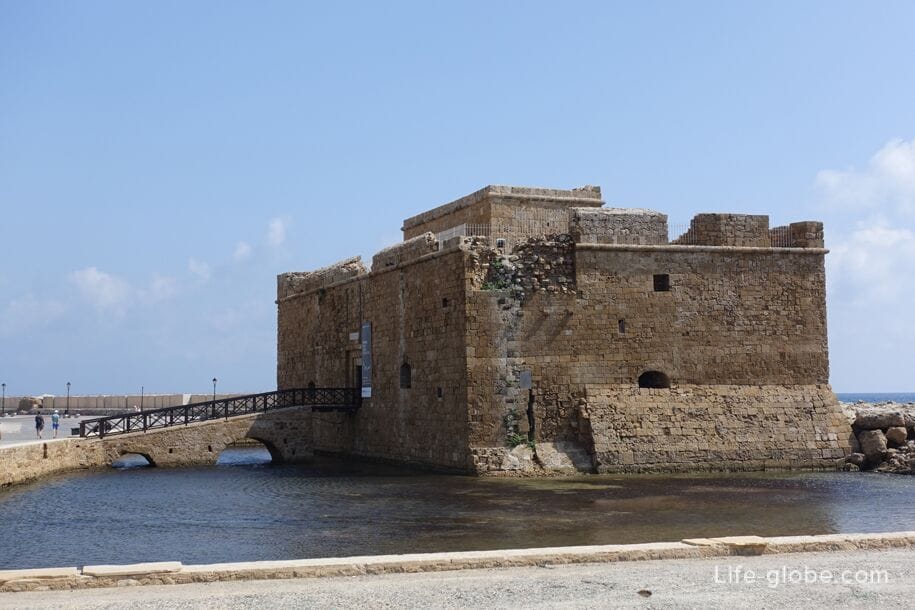
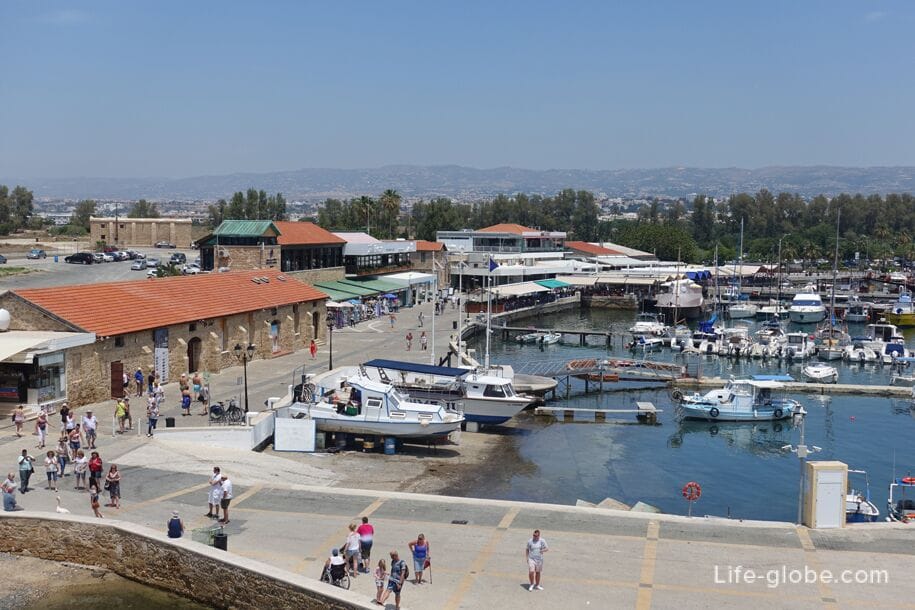
On the right side of Paphos castle can be seen the sculpture "Modern Aphrodite" - the girl-the goddess climbed on a large rock and ran glance toward the Harbor.
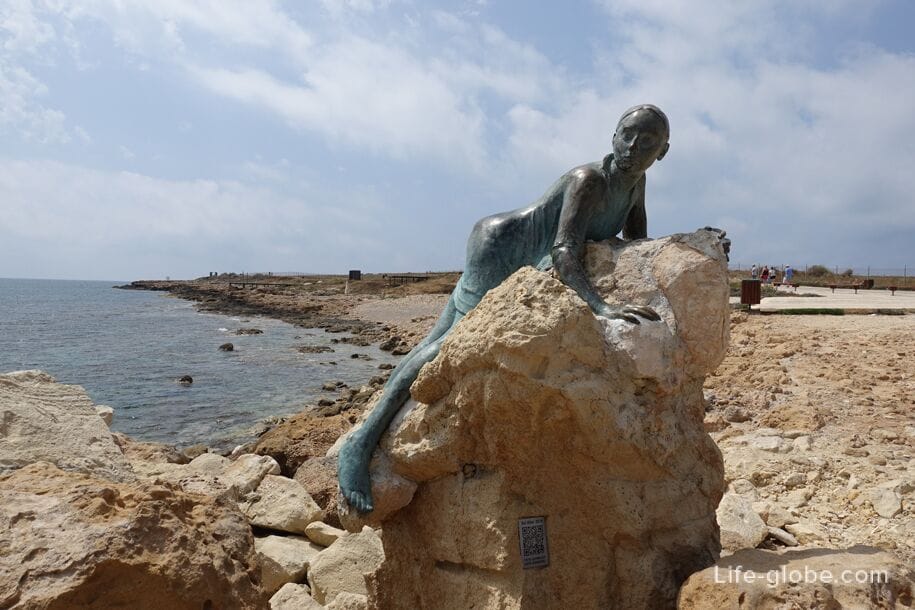
The ruins of the Church of Panagia Limeniotissa (Basilica of Panagia Limeniotissa) are a short distance to the North of Paphos harbour, near the South-Eastern part of the Paphos Archaeological Park.
The Basilica was built in the early 5th century and dedicated to "our lady of the Harbour". The Church was discovered in 1937 and formally excavated in 1959. Today the Basilica is part of archaeological objects the Archaeological Park of Paphos.
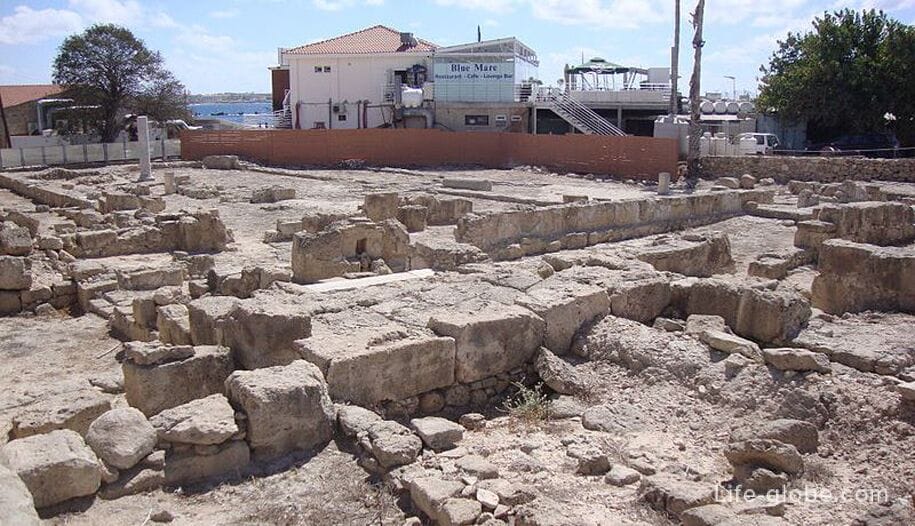
Archaeological Park of Paphos (Paphos Archaeological Park) is one of the most important sights of Paphos, which is a site of objects of several ages, located under the open sky near Paphos harbour.
The complex of the Archaeological Park includes the ruins of a castle Forty columns, four villas (House of Dionysos, House of Aion, House of Theseus, House of Orpheus), which preserved mosaic floors, as well as the Agora, the Odeon, the asklepeion and the latest construction of the Park is the lighthouse. Excavations in the Park is underway and is currently. Read more about the Archaeological Park of Paphos...


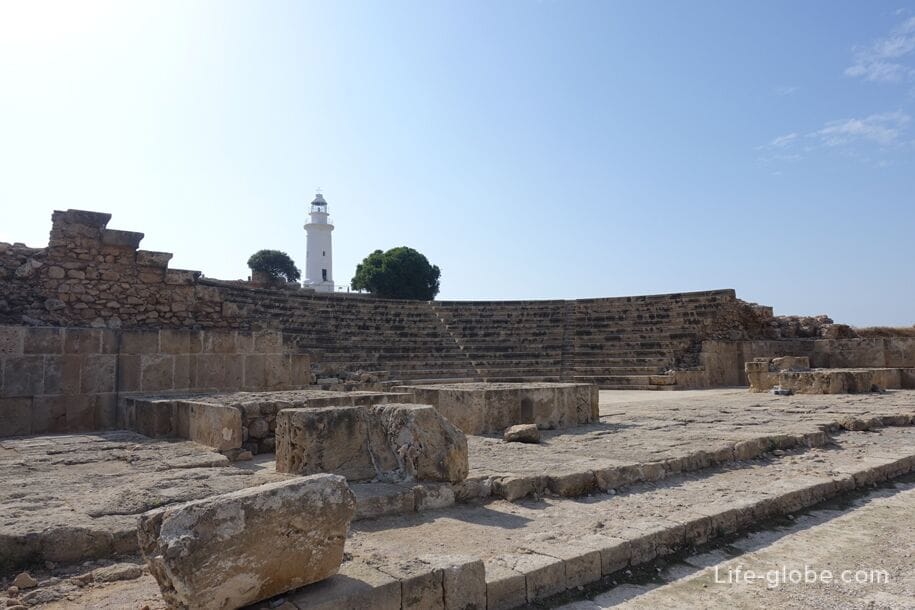
Complex Chrysopolitissa - archaeological site comprising:
- ruins of an early Christian Basilica (4-7 century ad) and the medieval Franciscan Church (13th century). Among the ruins you can see the remnants of the former colonnades, mosaics and floor of the atrium;
- the pillar of St. Paul's, near which, according to the Scriptures, the Apostle Paul was subject to corporal punishment;
- and the main attraction of the complex is the Church of Panagia Chrysopolitissa, built in the 1500s on the ruins of earlier shrines. Read more about the complex of the Church of Chrysopolitissa...


Medieval Ottoman Baths has its origins in the Roman and Byzantine periods. Baths combine functionality and architectural features of the Roman steam baths and Byzantine, Arabic and Ottoman Turkish tradition of steam bathing. Like their Roman predecessors, these baths consisted of a series of cold, warm and hot rooms through which it successively passed bathers.
Some baths can be seen in the complex Chrysopolitissa, whereas other, similar, located just North of the complex.

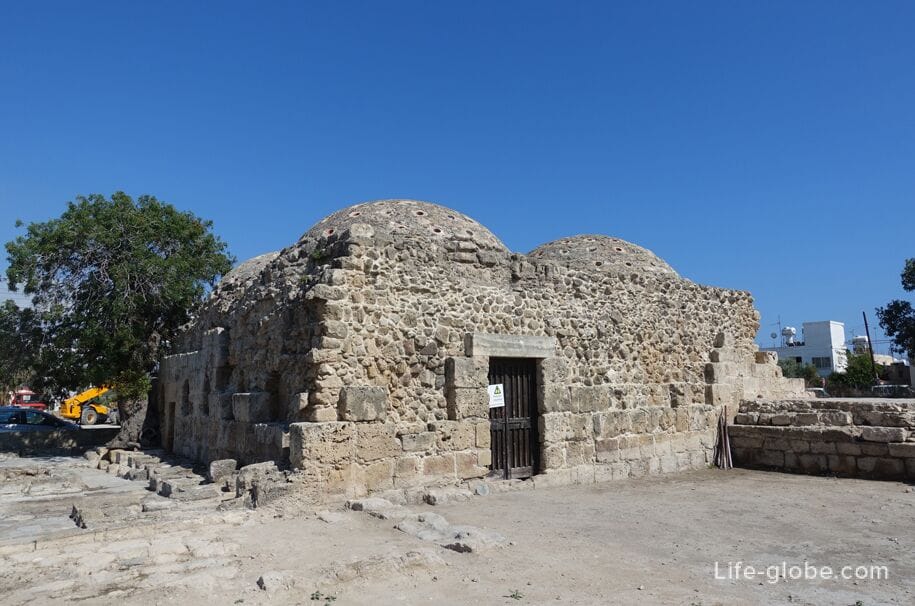
The Agia Solomoni Catacombs - one of the most famous catacombs of Paphos.
Currently, the catacombs is one of the main Christian shrines of Cyprus, which is a small underground paleo-Christian complex, consisting of several small caves, partly carved into the rock formations.
Near the entrance (descent) into the catacombs growing pistachio tree, the branches of which are tied with colored ribbons left by parishioners and tourists in the hope of healing from diseases. Read more about the catacombs of Agia Solomoni...
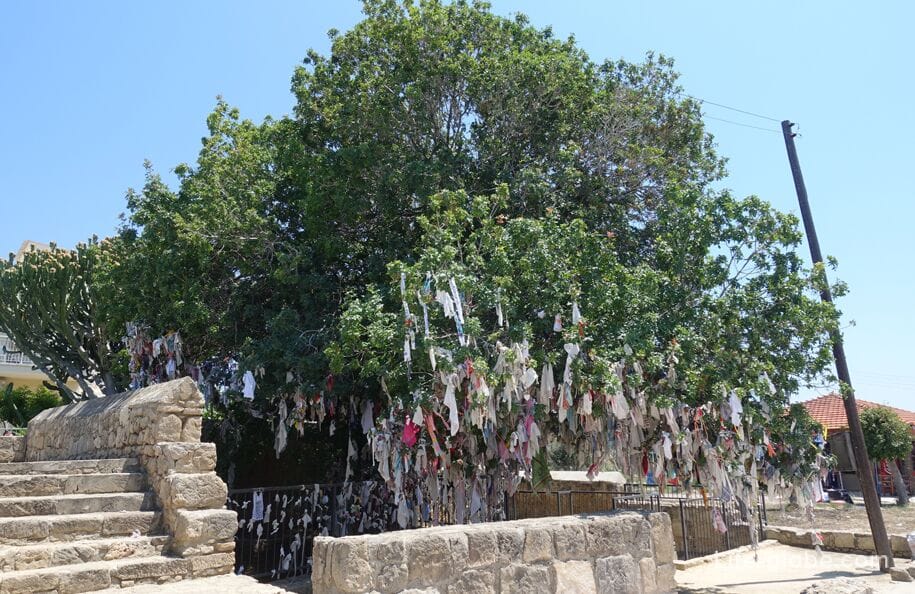

Mountain Fabrica (Fabrica Hill) is a limestone mountain, rather a small hill, which in the depths of which are concentrated such historical sights of Paphos such as: quarries, pebble mosaic, cave lovers or Agios Agapitikos and an amphitheater.
Currently, the Fabrica mount is a complex archaeological site of ancient objects, assigning the most part of which is still not completely defined. The only thing known is the age of the objects around 3rd century BC (Hellenistic-Roman period). Read more about mountain Fabrica and its Museum...
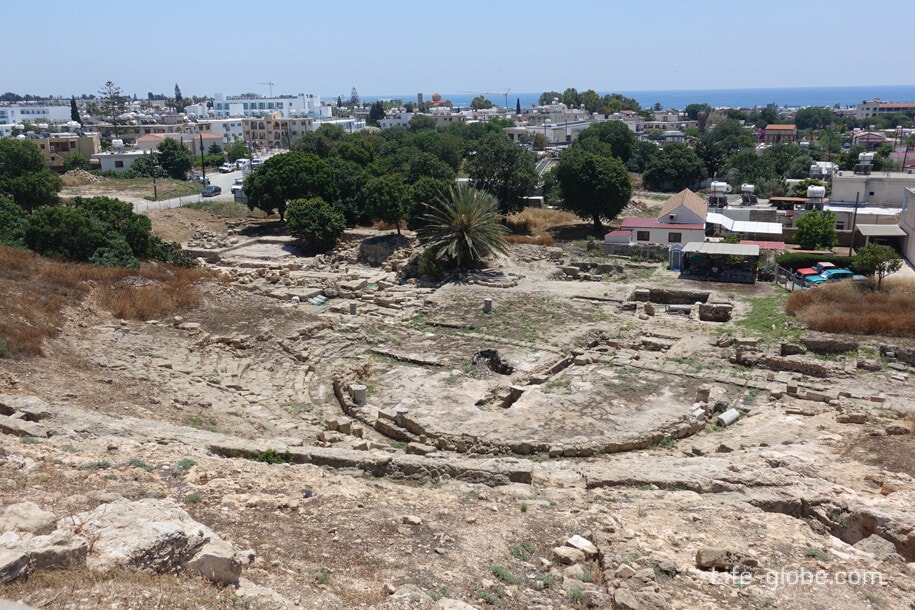
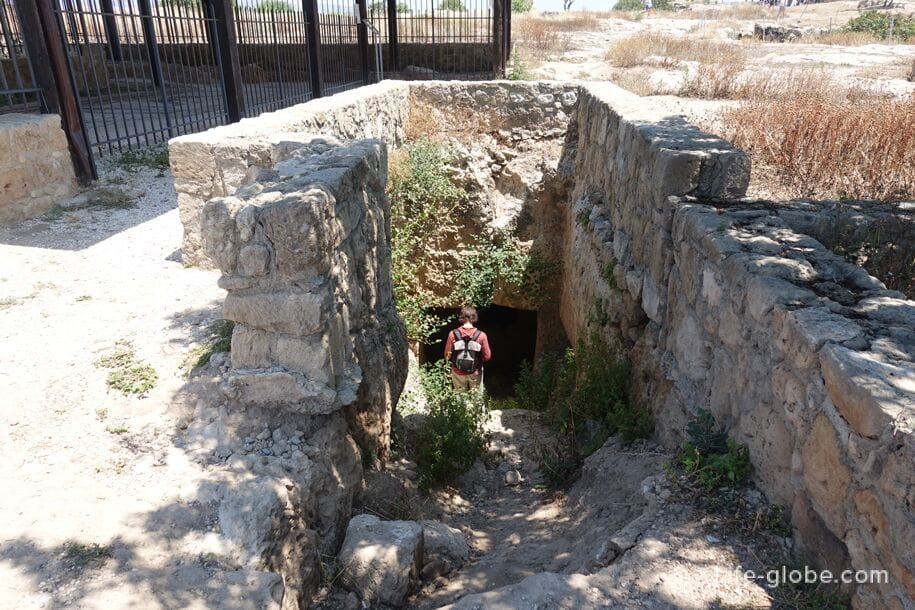
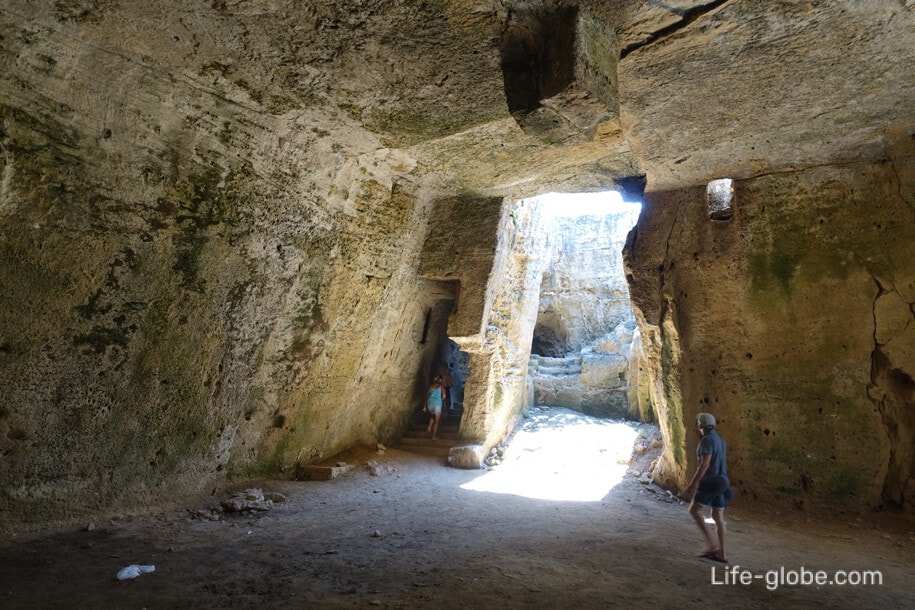
The catacombs of St. Lambrianos (Lambriana) or Lambrianos Cave (Agios Lambrianos Catacomb), is a spacious cave, or a series of caves, with rather high vaults, carved into calcareous rocks.
The catacombs of Agios Lambrianos are believed to belong to one of the first places in Cyprus where Christian worship took place - the early Christian period (330 - 650 AD).
The catacombs of Lambrianos are located on the west side of Mount Fabrika (across the road), near the Kings Avenue Mall.
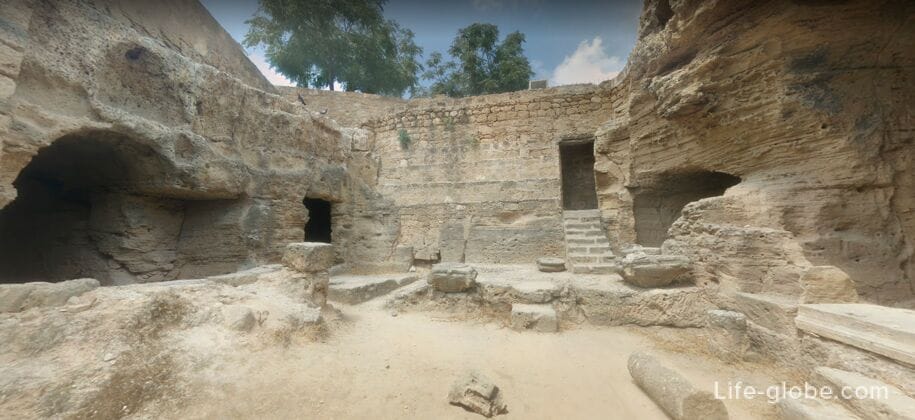
Tombs of the Kings (Royal tombs) is a necropolis located to the North along the coast from the harbour of Kato Paphos.
The necropolis was built during the Hellenistic period (3rd century BC), to meet the needs of the elite of Nea Paphos. The use of shrines has nothing to do with his name - "tombs of the Kings" and the burial of kings. In this place were buried the higher administrative officials, outstanding personality and nobility of the ancient Paphos.
Currently, the tombs of the kings is a very vast territory under the open sky, surrounded by a fence where you can see the remains of underground burial chambers are partially or completely carved into the rock formations.
On the site of the tombs of Paphos is 8 complexes of graves. For the convenience of visitors all the tombs are numbered, and each has installed an information plate. Read more about the Royal tombs...
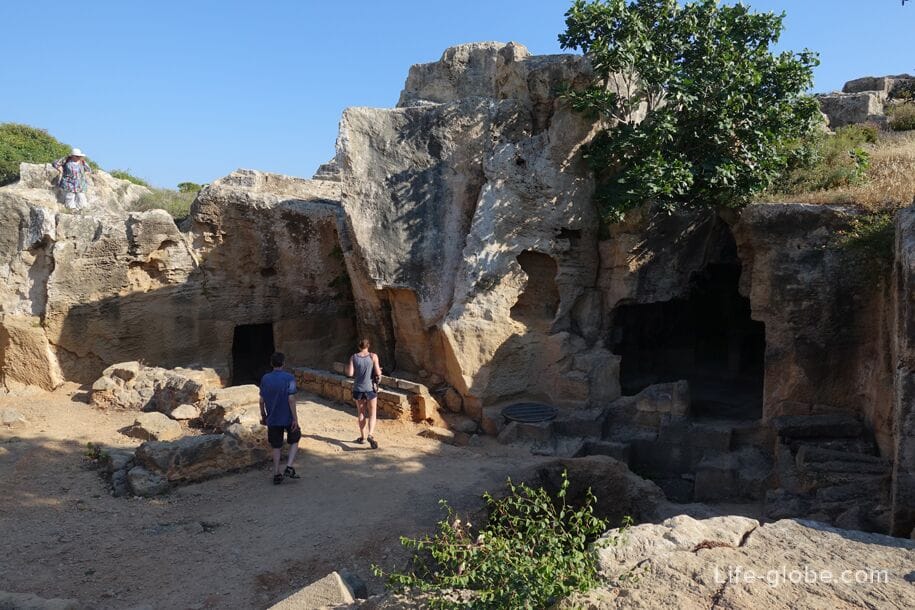
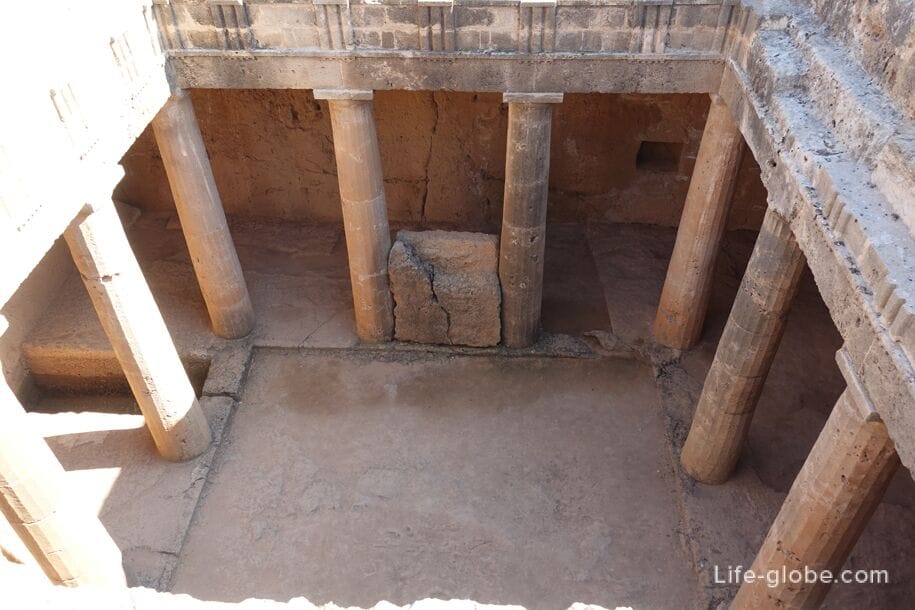
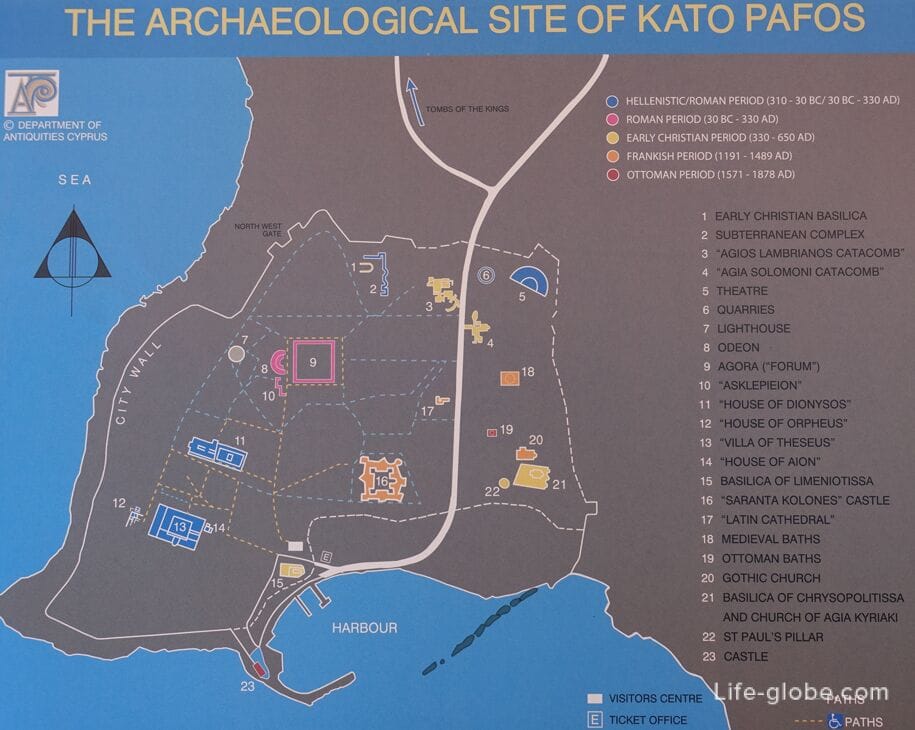
The Church of Panagia Theoskepasti - Orthodox Byzantine Church, located near Paphos castle and Harbour.
The history of the Church of Theoskepasti comes down to the early 10th century. The temple was built on a small cliff, which made the Church a recognizable and clearly visible even from a distance. Currently at the base of the Church, it is also possible to see part of the old rocks. Read more about Church of Panagia Theoskepasti...
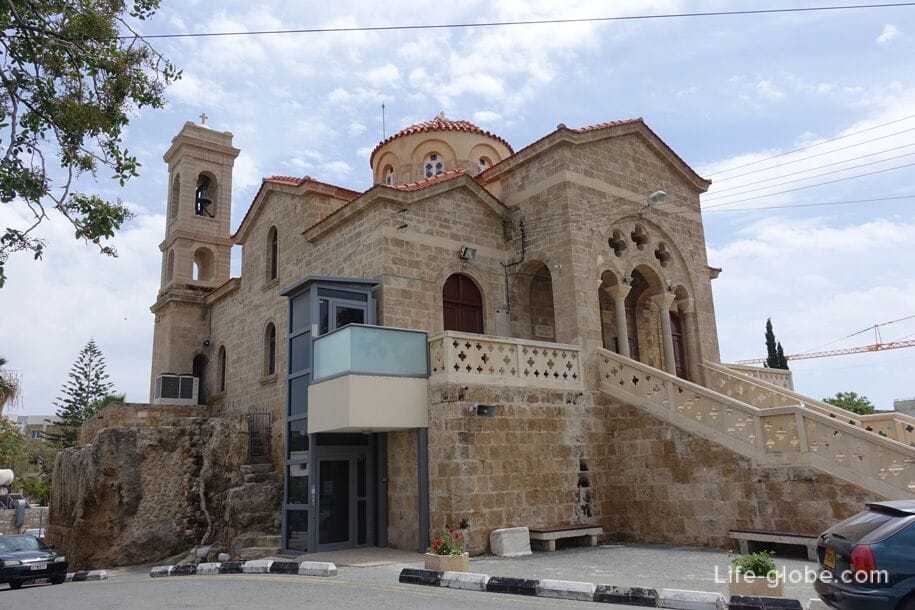
A small chapel of St. George, or the Church of Agios Georgios is located in the heart of Kato Paphos. It's very small and simple Church, both in appearance, as the interior decoration.
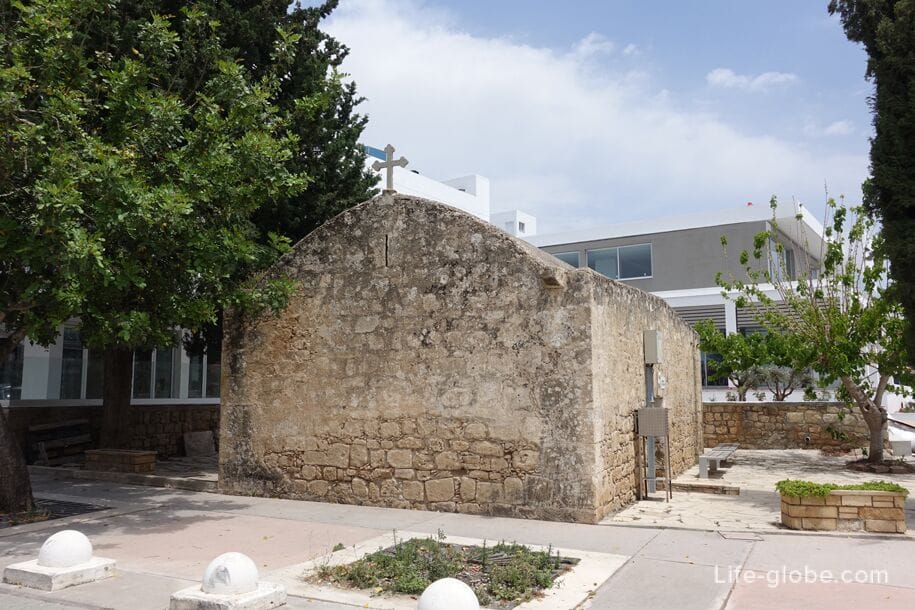
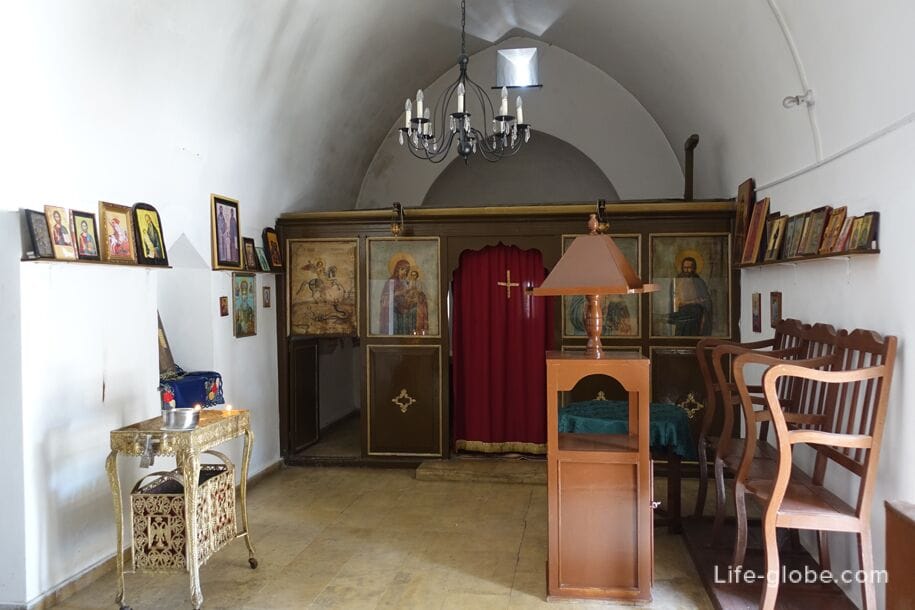


Very small and simple stone chapel
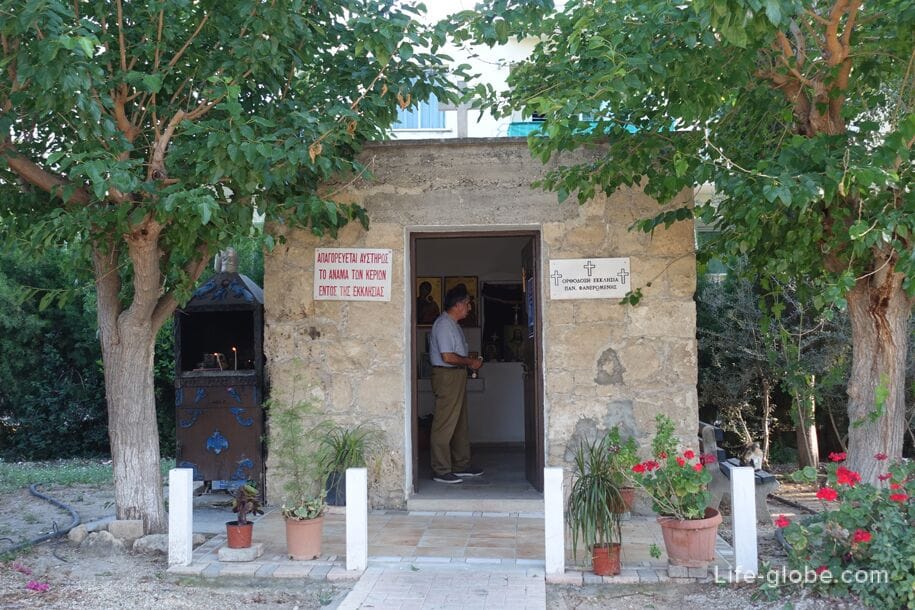
A small white Church, near which there is a public garden with Seating area
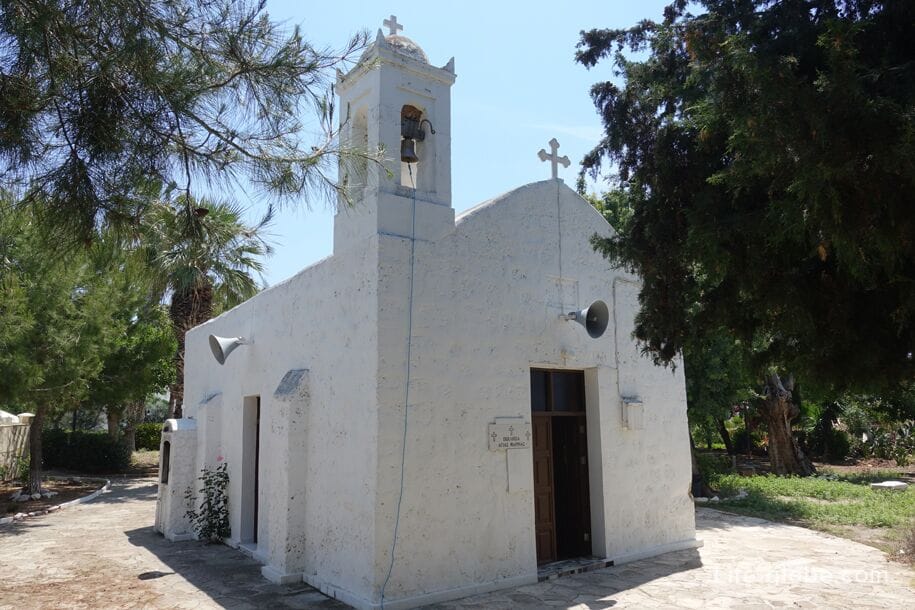
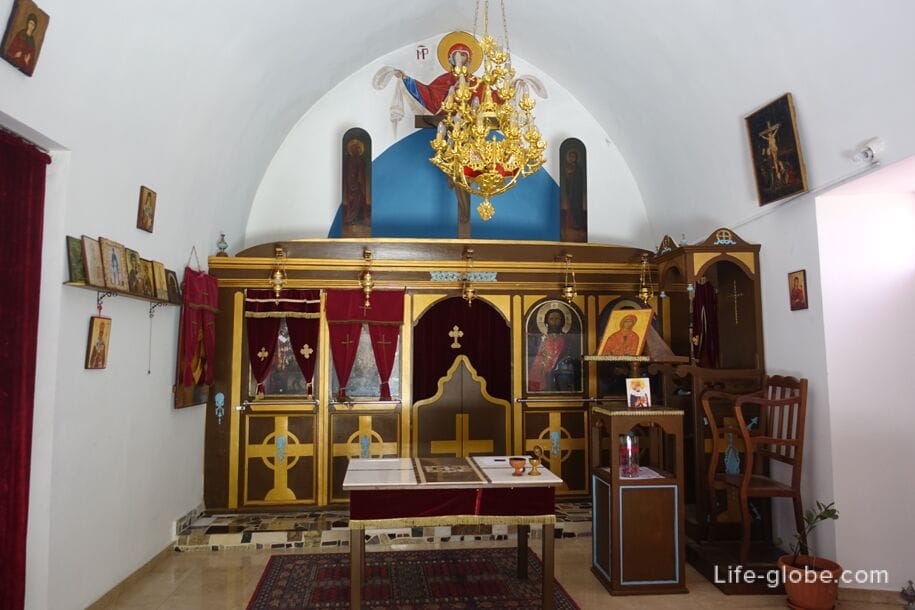
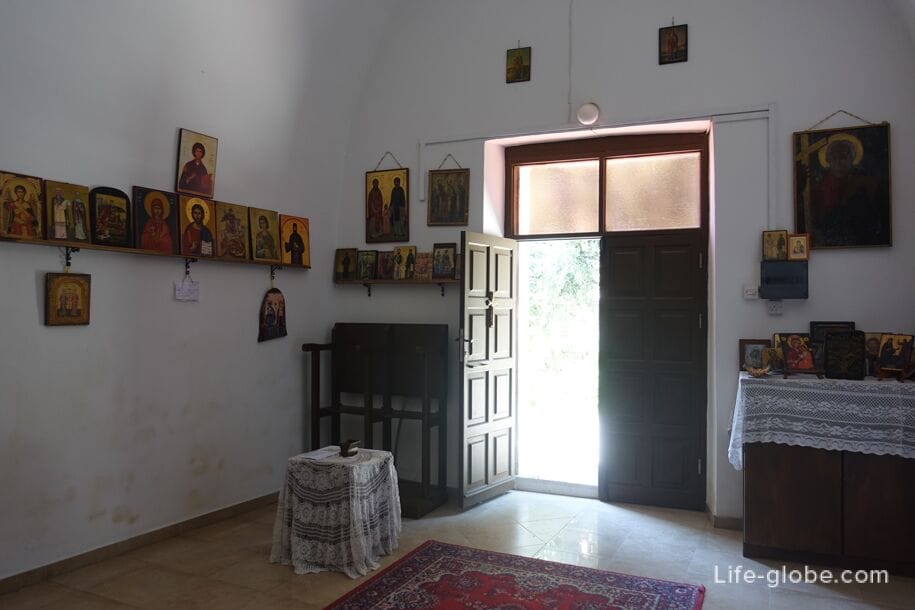


Church of St. Anthony the Great or Agios Antonios is a small Church located in the centre of Kato Paphos near the so-called "Bar street".
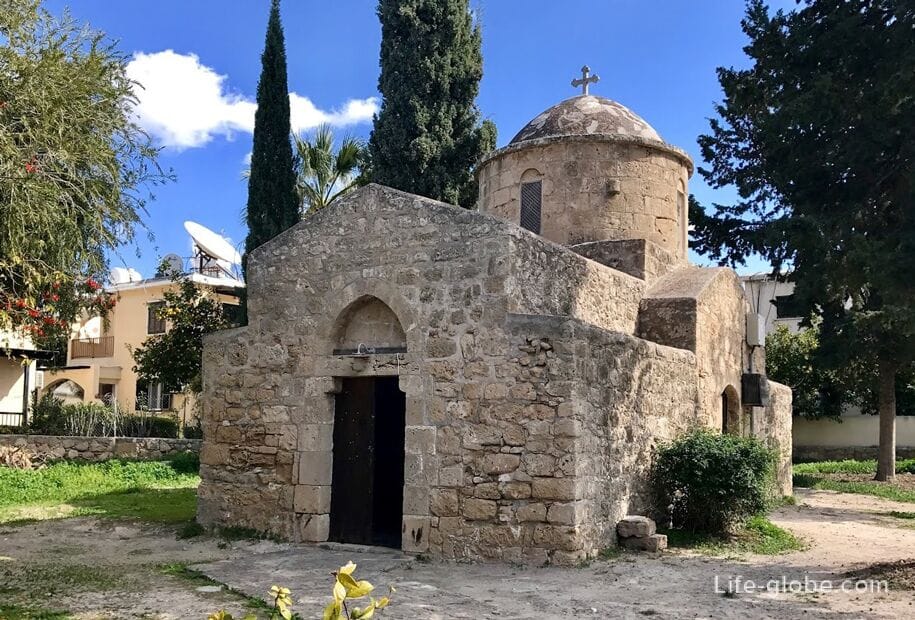
The Church of Agioi Anargyroi is one of the largest and most new churches of Paphos. The Orthodox Church honors the Holy healers, called Cosmas and Damian was built 14 years from 1980 to 1994.
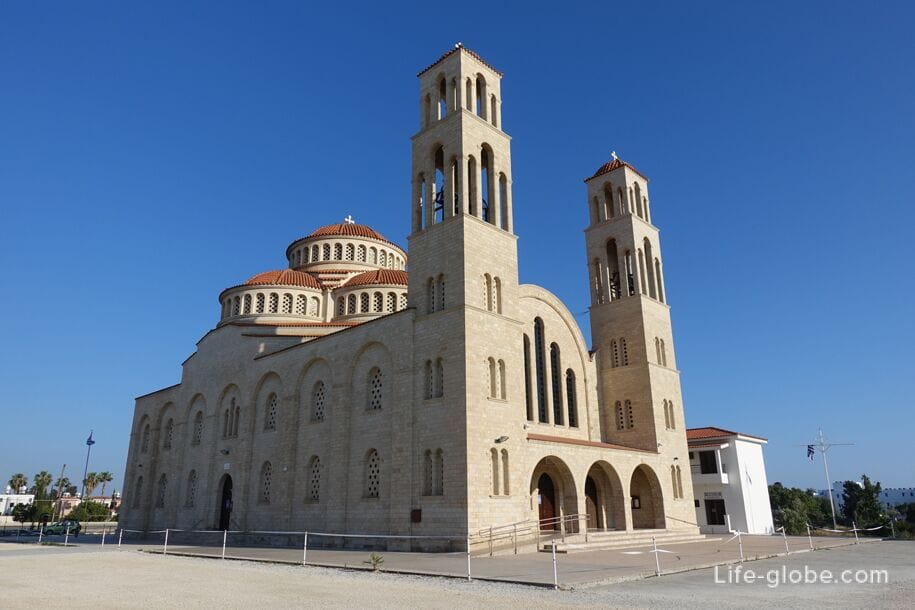
Medieval Tower is the remains of a medieval tower, about which almost nothing is known, and it is located far from the tourist centre, at a distance of more than 3 kilometers from the harbour, at the end of the street Panikkou Pastidi. Around the tower grounds are not very nice inside and the entrance closed.
In Yeroskipou are two churches:
- the Church of Agia Paraskevi, built in the 9th century in the middle of modern settlement and representing a five-domed, three-level, vaulted Basilica, making her one of two such churches on the island and iconic example of Byzantine architecture;
- the small white Church of St Nicholas (St Nicholas Church Paphos) with a blue domed roof, is located directly near the sea and beaches of Yeroskipou.
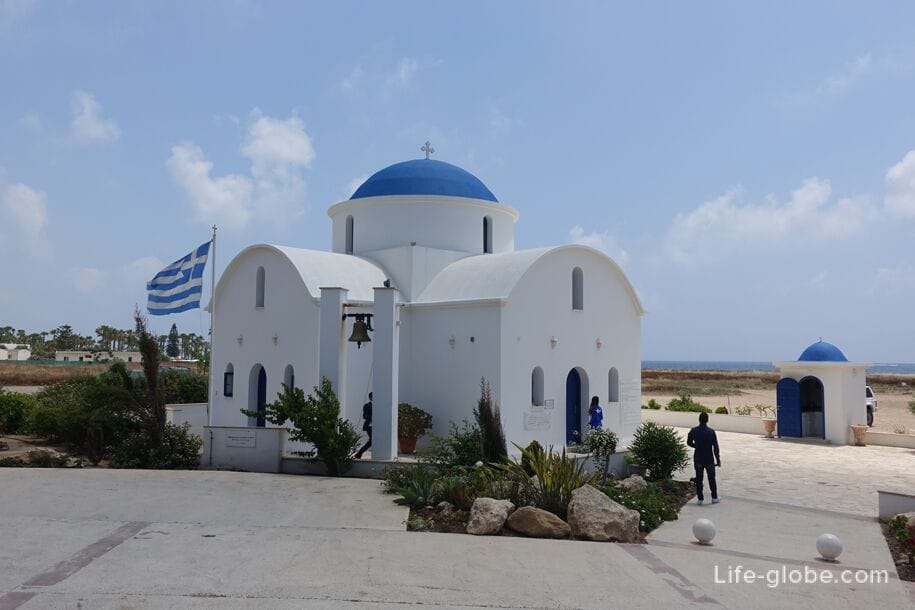
In addition to overpowered in upper Paphos (urban area) there are some historical monuments and churches as well as museums and parks. Example: Mouttallos Cliffs; the Byzantine Museum; the ethnographic Museum of Paphos; an art gallery; the Agios Kendeas Church, dedicated to St. Kendis; Greek Orthodox Church of the Apostle Paul and the barbarians, etc.
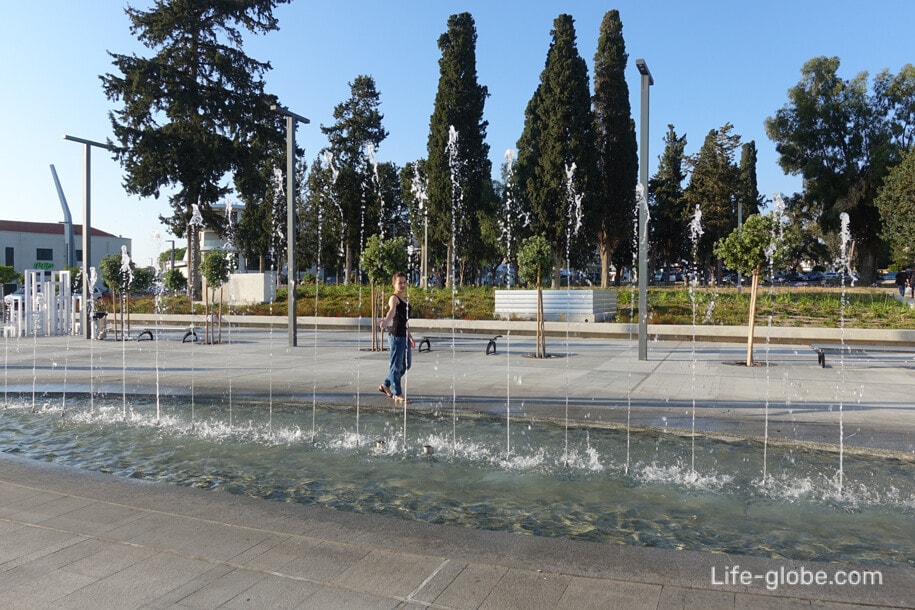
Rock of Aphrodite or Aphrodite's rock - a legendary rock, one of the main and most visited attractions of the West coast of Cyprus.
With the rock of Aphrodite is rich in legends, the essence of which boils down to one thing - this stone is the birth place of the beautiful maiden emerging from the sea foam goddess of beauty and love Aphrodite.
Near Aphrodite's rock is the eponymous beach of Aphrodite (Aphrodite Beach). The pebbly beach of Aphrodite and has the shape of a small Bay. The sea in this area, usually with strong waves, so that local warn tourists to bathe in it, also can not climb the rock of Aphrodite. But all the warnings are useless, you still swim and rock climb. Well and how not to dip a curious tourist, after all, according to legend, the waters of the Bay of Aphrodite have a powerful energy of life and rejuvenation. Read more about cliff and the beach of Aphrodite...
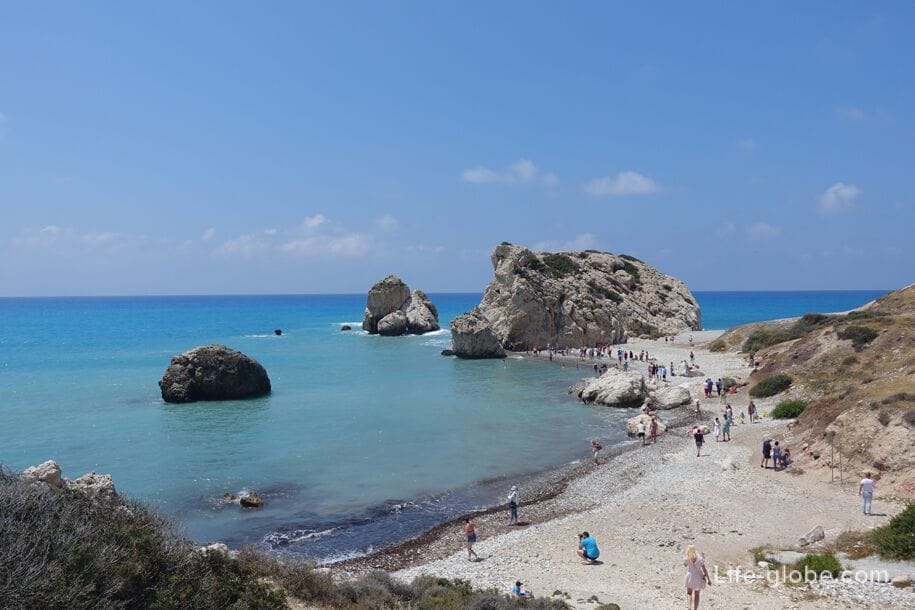
Kouklia is a small village with a rich history, located 26 kilometres from Paphos centre. In ancient times it was the ancient centre of the island, called Paleo Paphos (Old Paphos). At present, the area of the village of Kouklia is a Museum under the open sky, whose main attraction is the ruins of the temple of Aphrodite.
Rock of Aphrodite is also located in Kouklia, so you can combine a visit to Aphrodite's rock and the historic centre of Kouklia.
Coral Bay - a popular tourist destination located in the heart of Peyia, 12 kilometres North along the coast from the centre of Kato Paphos.
Coral Bay is notable primarily for its sandy beaches that are considered some of the best beaches of the surrounding area of Paphos.
The beaches of Coral Bay (of the Coral Bay and Laourou) is flanked by headlands, making them more picturesque, and the sea water in the Bay is more calm and good for swimming.
On the promontory that separates the two Coral Bay beach, is the Museum of the Mycenaean Colonization of Cyprus Maa - Palaiokastro. Also in Peyia is the Paphos zoo and several modest attractions in the main square with a fountain, and several churches, including the Church of Agios Georgios, located in the Northern part of Peyia. More about Coral Bay...


Special attention deserves the Avakas Gorge, located in the heart of Peyia village.
Avakas is not just a natural attraction but also a place for active Hiking. The height of the cliffs in the Avakas canyon is about 30 meters. The length is available walking route is around 3 kilometres and suitable for families with grown up children.
The nature reserve of the Akamas Peninsula - natural landmark of the Paphos district, located closer to the Polis - is westernmost point of Cyprus.
Remarkable Akamas Peninsula for its natural beauty.
The main attractions of the island are:
- Baths of Aphrodite, is the famous mythological object. It is believed that in this place Aphrodite usually took baths in pools of natural caves, where she met her lover, Adonis. With baths associated with many beliefs. According to one of the water in the baths can rejuvenate bathing or washing itself in it. While the second says - swimmers in the water, can restore fertility and sexual energy;
- Akamas Blue Lagoon is a Bay framed by cliffs. Looks very picturesque, and the water in the Bay is clean and has a gentle blue tide;
- Hiking routes in the reserve, among which the most famous are the Aphrodite trail and Adonis trail.
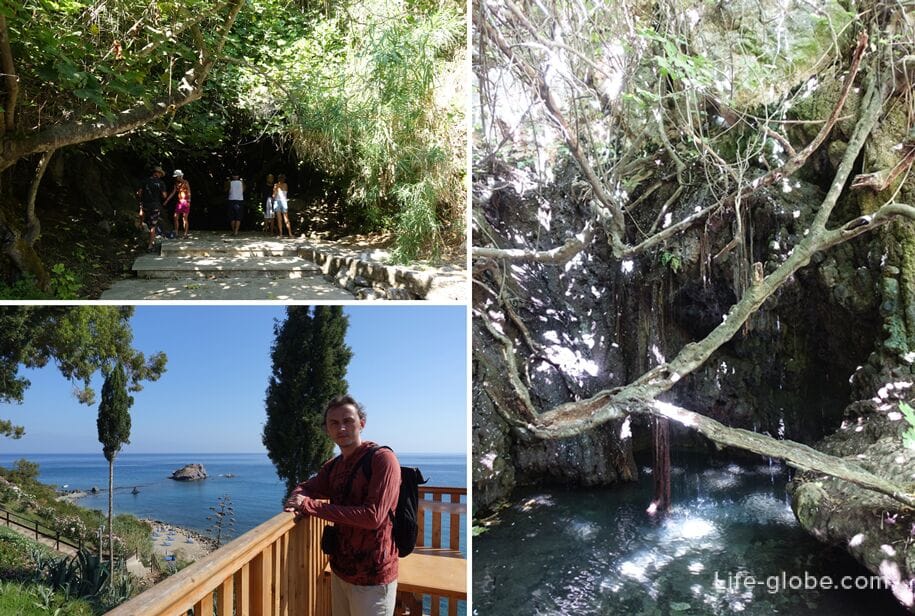
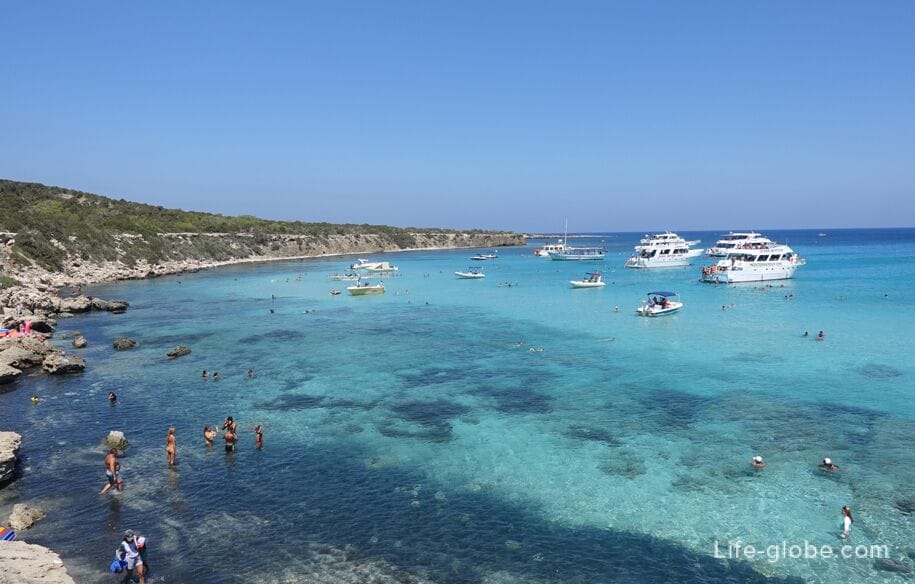
Baths of Adonis is located 4 kilometres from the centre of the village of Koili and 15-17 kilometers from Paphos Harbor. Data bathing are also related to the Cyprus legends and beliefs. Baths represent a natural pool with a small flowing waterfall. The entrance fees.

Saint Neophytos monastery - stavropegic monastery of the Orthodox Church of Cyprus, located at an altitude of 412 meters above sea level, near Tala village and 12 kilometers from Paphos Harbor.
The monastery was founded in the XII century by the monk Neophytos the Recluse. Currently, the monastery is quite a lively place, attracting, both pilgrims and tourists. The feast of St. Paul is celebrated on 28 September, the monastery acquires special popularity.
The monastery Chrysoroyiatissa is a monastery located at a distance of about 40 kilometers from Paphos Harbor towards the center of the island, at an altitude of 700 meters above sea level.
The monastery was founded by monk called Ignatius in the 12th century. The modern building of the monastery dates back to 1770.
Celebrations in the monastery is held annually on August 15 in honor of the virgin Mary. In the middle of 1980-x years old winery of the monastery was reopened and is now working on a commercial basis. He produces wine from its own vineyards of the monastery.